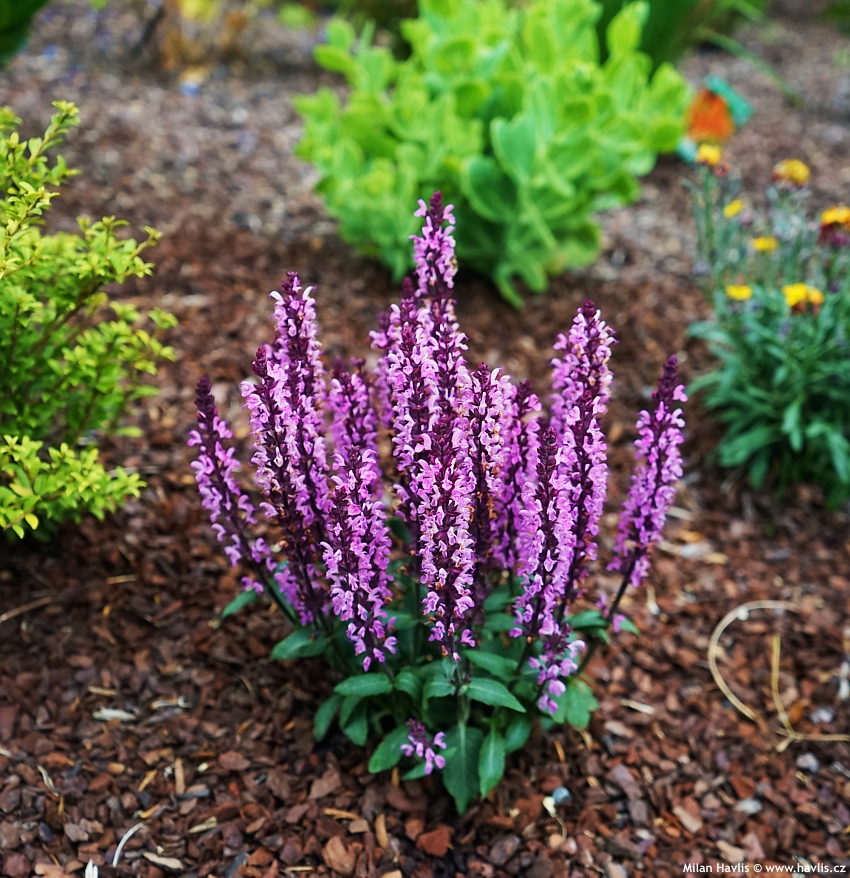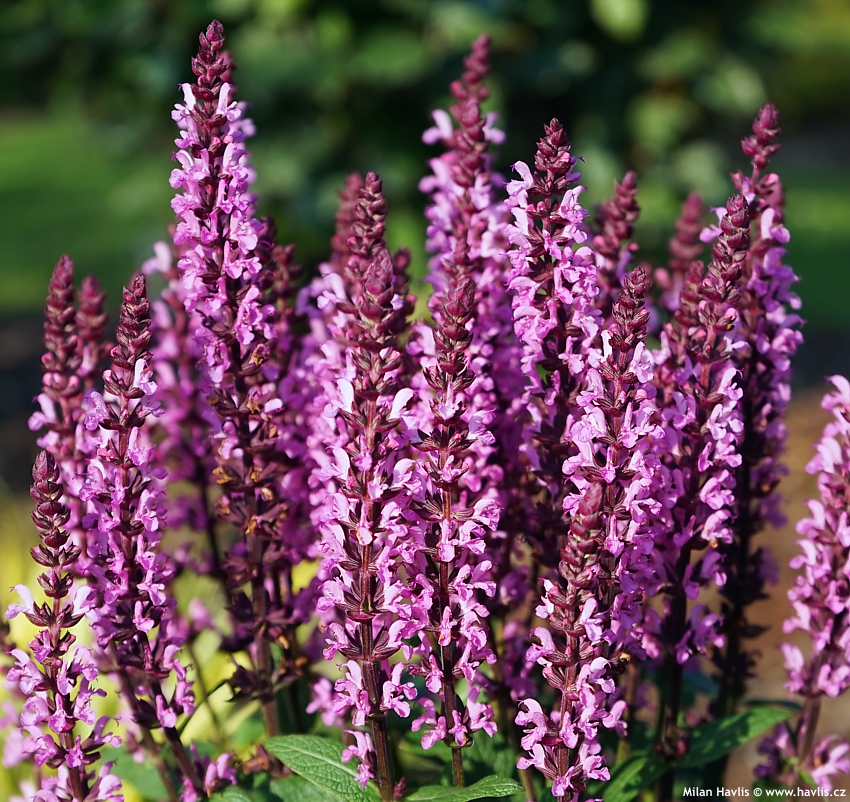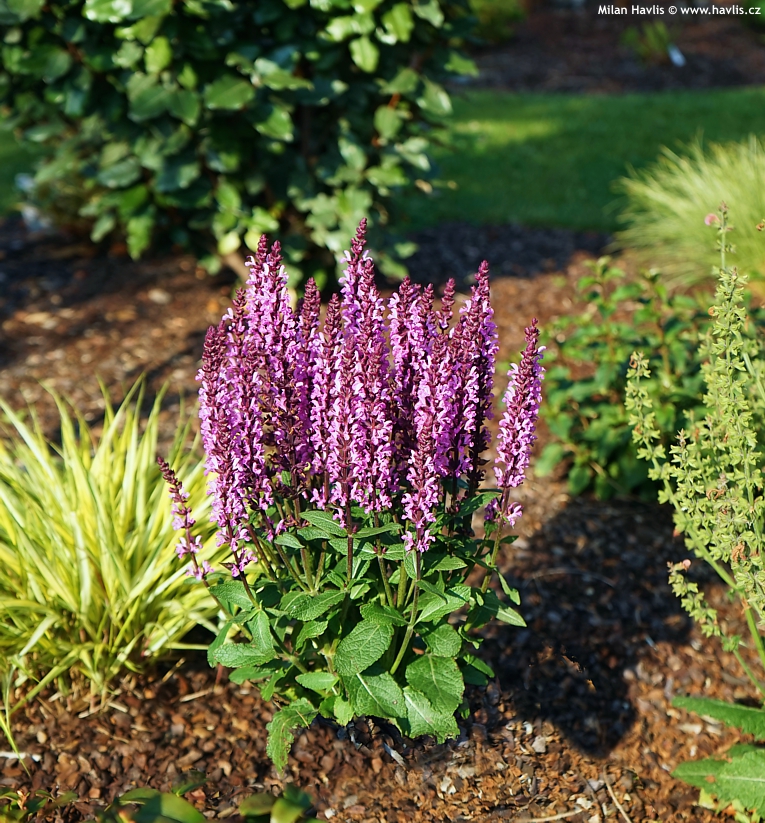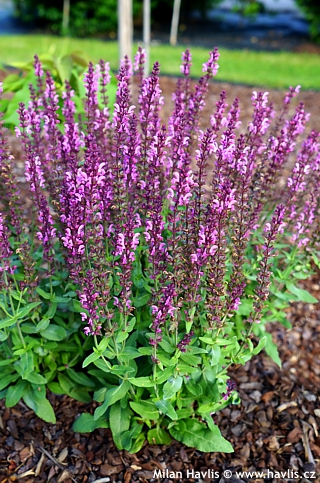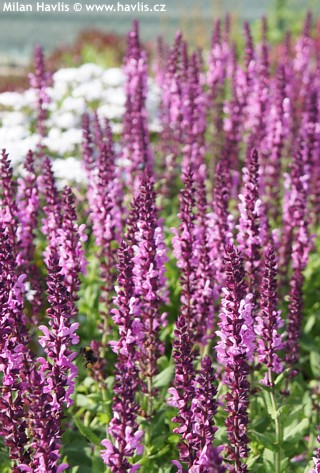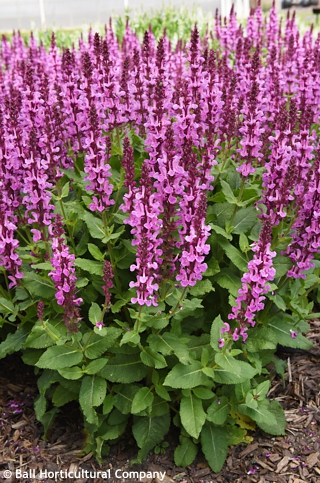Salvia nemorosa 'MIDNIGHT ROSE' woodland sage
size/type
low perennial,low perennial
usual height
0,2-0,3m
usual width
0,3-0,4m
leaves
deciduous conifer
colour of leaves
flowers
showy
colour of flowers
blooming time
June-August
location
full to partial sun
soil type
any (acidic to alkaline)
soil moisture requirements
evenly moist (dislikes drought)
USDA zone (lowest)
4 (down to -34°C)
winter protection
for zone 5+6

for zone 7

categorized
Salvia
Salvia is a large genus, containing about 900 species. In our climate mostly common (evergreen) sage is grown for culinary uses. Also, very popular are those of subtropical origin that are used here as annuals with long flowering season, especially in public areas. We concentrate on herbaceous perennials which are not widely cultivated and we believe that there are species, hybrids, and varieties worth the job.Description of the plant:
Midnight Rose is a woodland sage variety from the Midnight series developed by Dümmen Orange™, but is not related to the American variety Midnight Model from Walters Gardens which belongs among meadow sage hybrids.Midnight Rose bears vivid neon pink flowers on extremely deep maroon, short stems only between 20 and 30 cm tall. The flowers are densely clustered in spike-like inflorescences and bloom from late May to early July. The inflorescences are clearly separated from the leaves making them look like a small bouquet stuck in a flower bed. They rebloom throughout summer but for best results and a good-looking plant we suggest cutting the plant back after the first flush in order to get new healthy foliage and a nice tuft. The leaves are 4-5 cm long, medium green, oval to broadly lanceolate and distinctly wrinkled. The plant is compact and dense.
Sage will grow in almost any well-drained soil. For best results grow it in light, humus-rich, well-drained soil in full sun or light shade. It needs no fertilizing, only in very poor or compacted soils it will benefit from occasional feeding with a balanced fertilizer. In early spring remove all above-ground parts except for rosette of new or over-wintered, healthy leaves lying flat on the ground. It is perfectly hardy to about -34°C (USDA zone 4) and will grow in outdoor pots and throws, too.
Last update 07-10-2022
QUICK PRICE OVERVIEW
CURRENTLY SOLD OUT
WANT TO TRY A SIMILAR PLANT?













